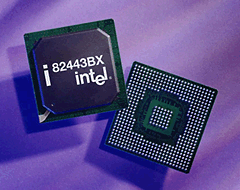BX Flagship: Asus CUBX
Introduction
Intel plans to release the i815 Solano chipset in two weeks. This chipset will come with Intel's hub architecture supporting 133 MHz FSB, UltraDMA/66, AGP 4x and real 133 MHz SDRAM support. On the basis of the 440BX benchmark results, this seems to be very promising.
Even though this new chipset is almost here, some motherboards companies still announce new BX motherboards. As you could read in Tom's Showdown At 133 MHz Part 2 , a BX system clocked at 133 MHz FSB provides even better performance than Intel's workstation motherboard OR840, which makes use of dual channel RDRAM. Nevertheless, the BX will be old fashioned pretty soon.
So why does Asus release a new, excellent featured motherboard based on a two years old chipset? We wanted to know what's behind it.
Why BX?
As already said, Intel's BX chipset is over two years old. Normally, computer components are out-dated within only some months, so why do so many people think that BX still is the one and only chipset?
- Intel chipsets using SDRAM (440LX and BX) can stand any competition, as VIA, SiS or ALi chipsets had never been faster. Moreover, SDRAM is approved and cheap
- BX is able to run 133 MHz absolutely stable. The only thing which you have to make sure is that your graphics card can cope with 89 MHz AGP clock speed.
- BX does even run at 150 MHz FSB, even it is only specified for 100 MHz
- BX only supports AGP 2x. Nevertheless, there has been no real need for AGP 4x so far. As long as the main memory's bandwidth remains at 800 MByte/s, AGP 4x will never be able to show its full potential
- The BX chipset has been revised several times, today it is probably the most mature, stable, reliable and fast chipset available for Pentium II/III and Celeron processors.
- The BX chipset is fully supported by all operating systems available.
Get Tom's Hardware's best news and in-depth reviews, straight to your inbox.

Patrick Schmid was the editor-in-chief for Tom's Hardware from 2005 to 2006. He wrote numerous articles on a wide range of hardware topics, including storage, CPUs, and system builds.
